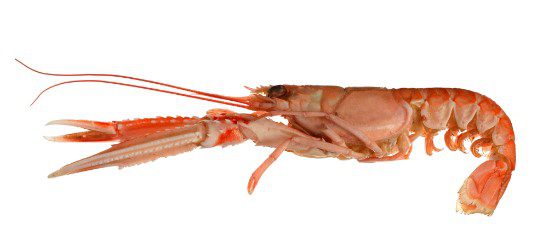

Langoustine is a safe and nutritious seafood that can be fed to dogs in moderation. It is low in calories and high in protein, omega-3 fatty acids, and a variety of vitamins and minerals. It should be boiled thoroughly before serving in order to remove any possible bacteria and parasites. Owners should be careful to devein the langoustine and remove the shell and tail to prevent any choking or stomach blockage hazards.
Langoustine offers a range of nutritional benefits to dogs. It is rich in protein, which helps with maintaining and repairing cells, tissues, and muscles. It also contains essential minerals like calcium, copper, iodine, iron, magnesium, phosphorus, selenium, and zinc. Omega-3 fatty acids found in langoustine are beneficial for the heart and brain of dogs, and vitamins B2 and B3 keep their nerves and blood healthy.
Although langoustine is not known to be dangerous to dogs, it should still be cooked thoroughly to eliminate any harmful bacteria and parasites. Feeding a dog langoustine too often or in an excessive amount can lead to digestive problems due to its high sodium content. Additionally, the shell and tail of the langoustine can be a choking hazard and can cause a stomach blockage if ingested.
When serving langoustine to a dog, it should be cooked thoroughly and should have the shell and tail removed. Owners should only feed langoustine to dogs occasionally in small amounts. This ensures that the dog can enjoy these nutritional benefits without risking any of the potential health risks.
Langoustine, also known as Norwegian lobsters or Dublin Bay prawns, is a type of maritime seafood that is highly nutritious for dogs. Originating from the icy waters of the northern Atlantic Ocean, langoustine is often used as a human delicacy in various cuisines, such as French and Scottish, but it can also be enjoyed by our four-legged friends.
Due to its low calorie content, it is an ideal addition to a dog’s diet. It is also rich in protein, minerals, omega-3 fatty acids, and B-group vitamins. All of these serve to maintain and repair tissues, muscles, and cells, as well as stimulate healthy blood flow. However, it is important to note that while langoustine provides many benefits to our canine companions, it should be served in moderation in order to avoid digestive issues due to the high sodium content. It should also be boiled thoroughly to remove any bacteria, and the shell and tail should be removed to prevent any choking.
For a special treat at home, you can boil a small portion of langoustine and offer it to your pup deveined and shelled. You could even serve it as part of a homemade meal for dogs, like adding langoustine to a mix of cooked rice, vegetables, and eggs. If langoustine isn’t accessible or affordable, you can substitute it with other fish, like tuna or salmon, or provide a supplement like fish oil.
One question readers may have is whether raw langoustine is safe for dogs. The answer is no, as raw seafood can carry bacteria and parasites. Another question might be, what kind of problems can ingesting langoustine cause? Feeding too much or too often can cause digestive issues due to its high sodium content, as well as choking and stomach blockage due to its shell and tail.
Has your furry friend ever tried langoustine? Let us know how you prepared it and how they liked it! We hope that both you and your pet can enjoy the benefits of langoustine in moderation. Bon appetite!